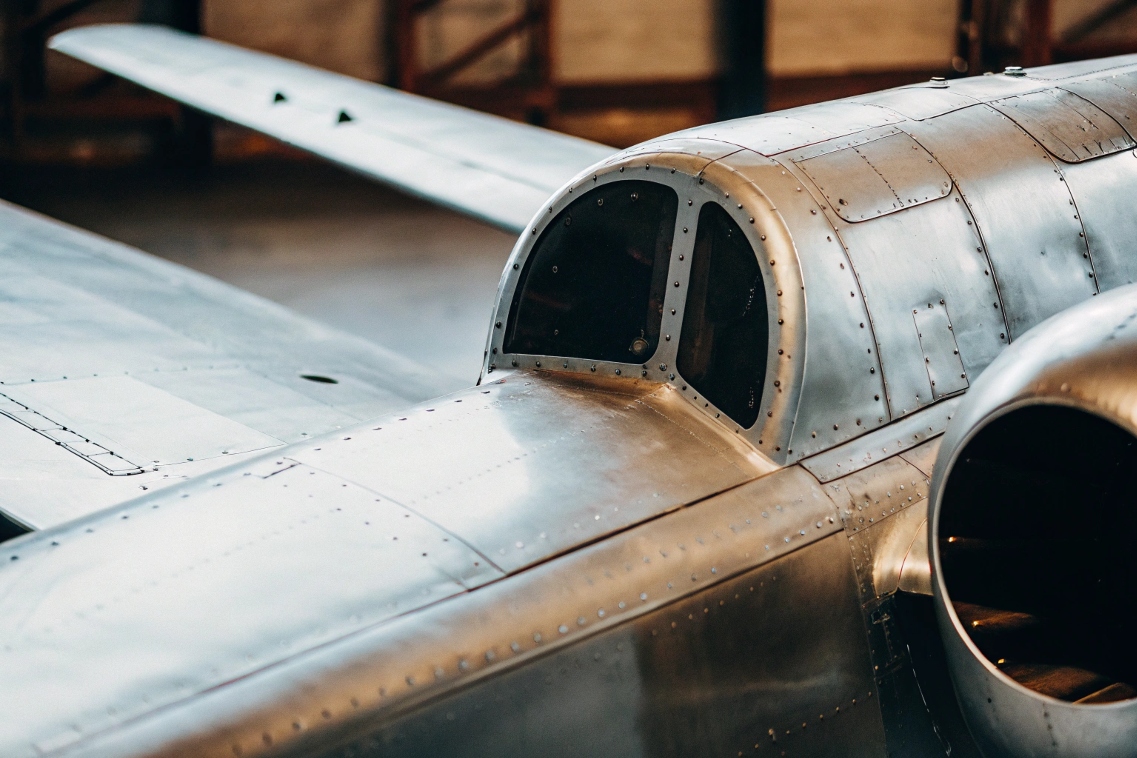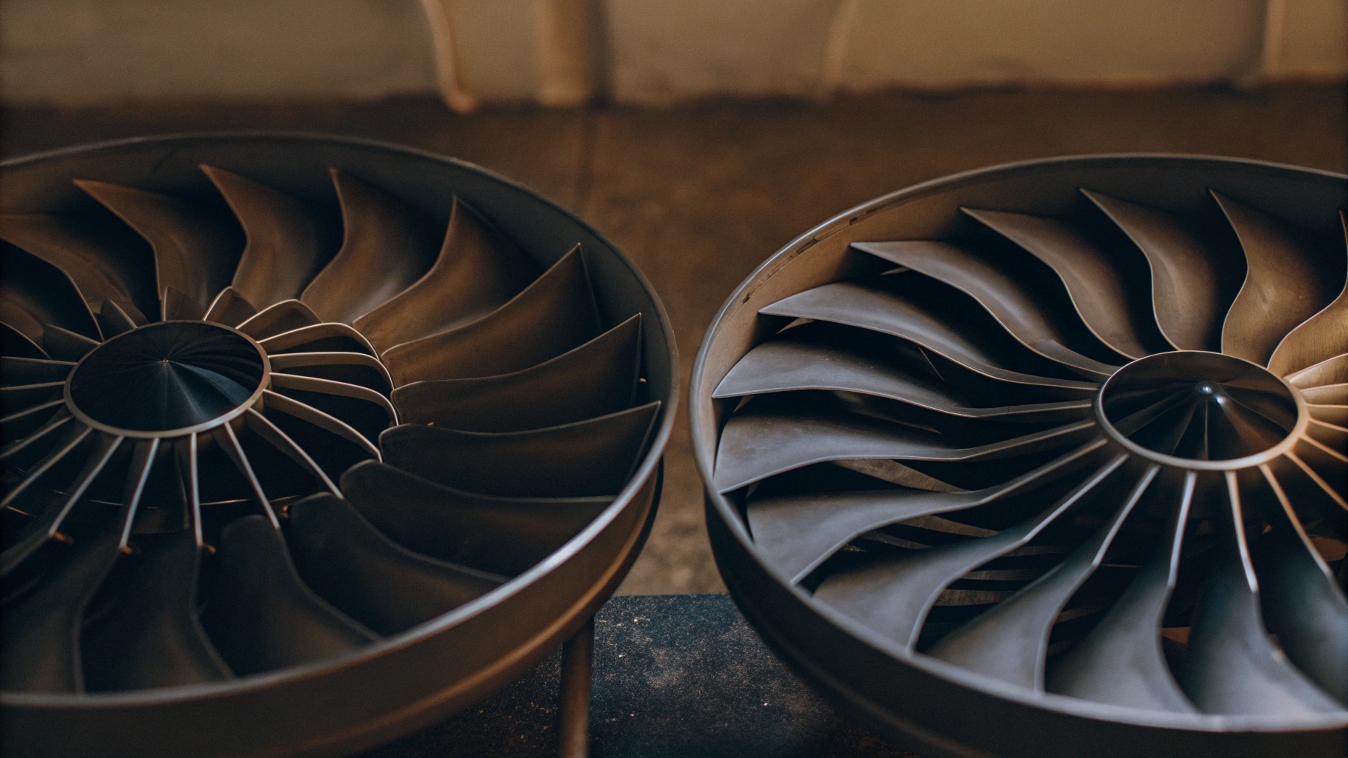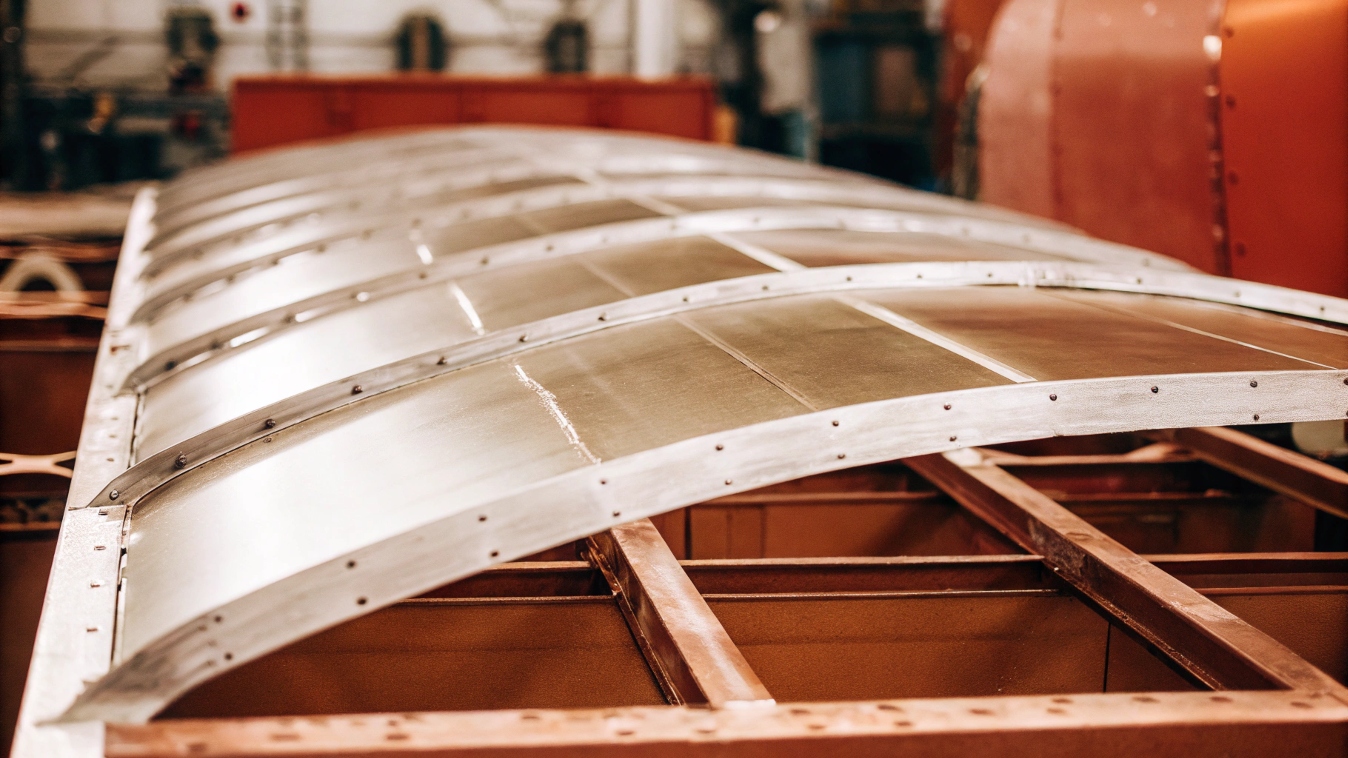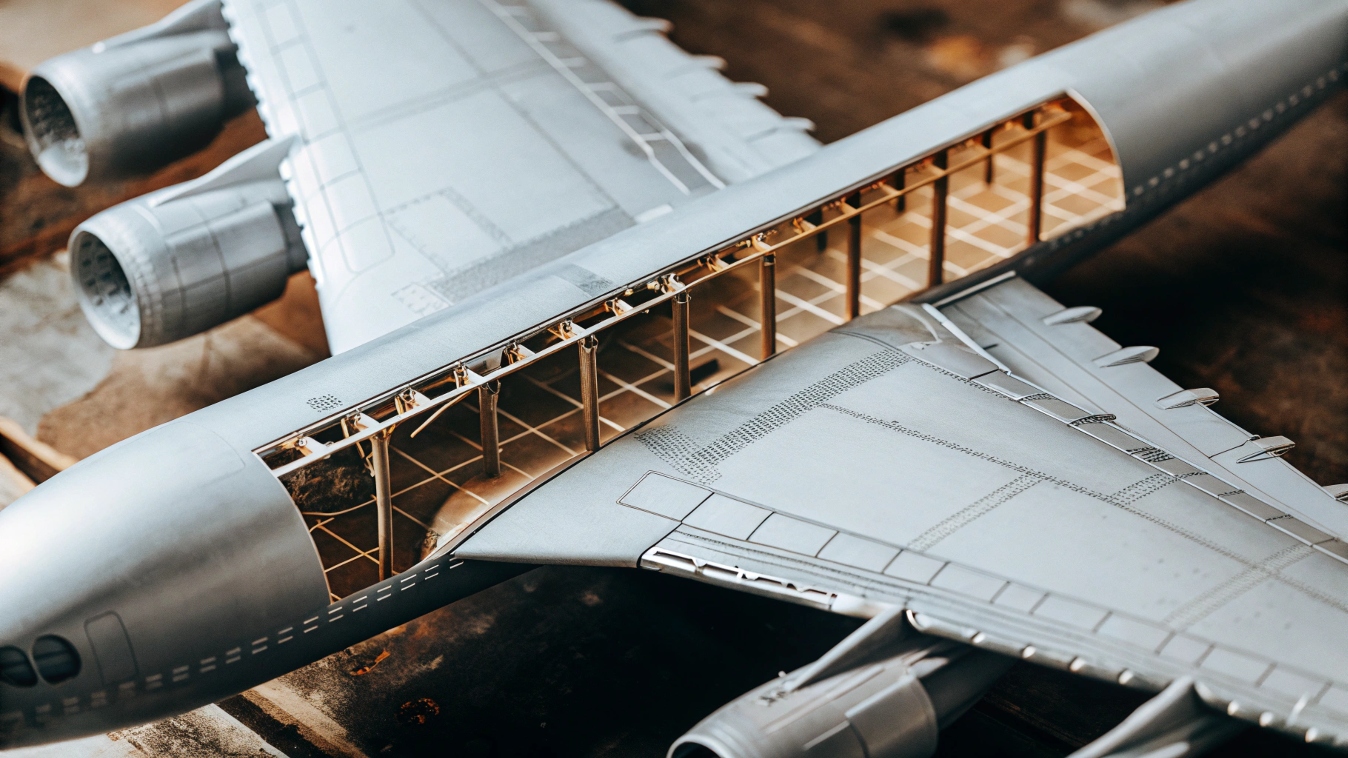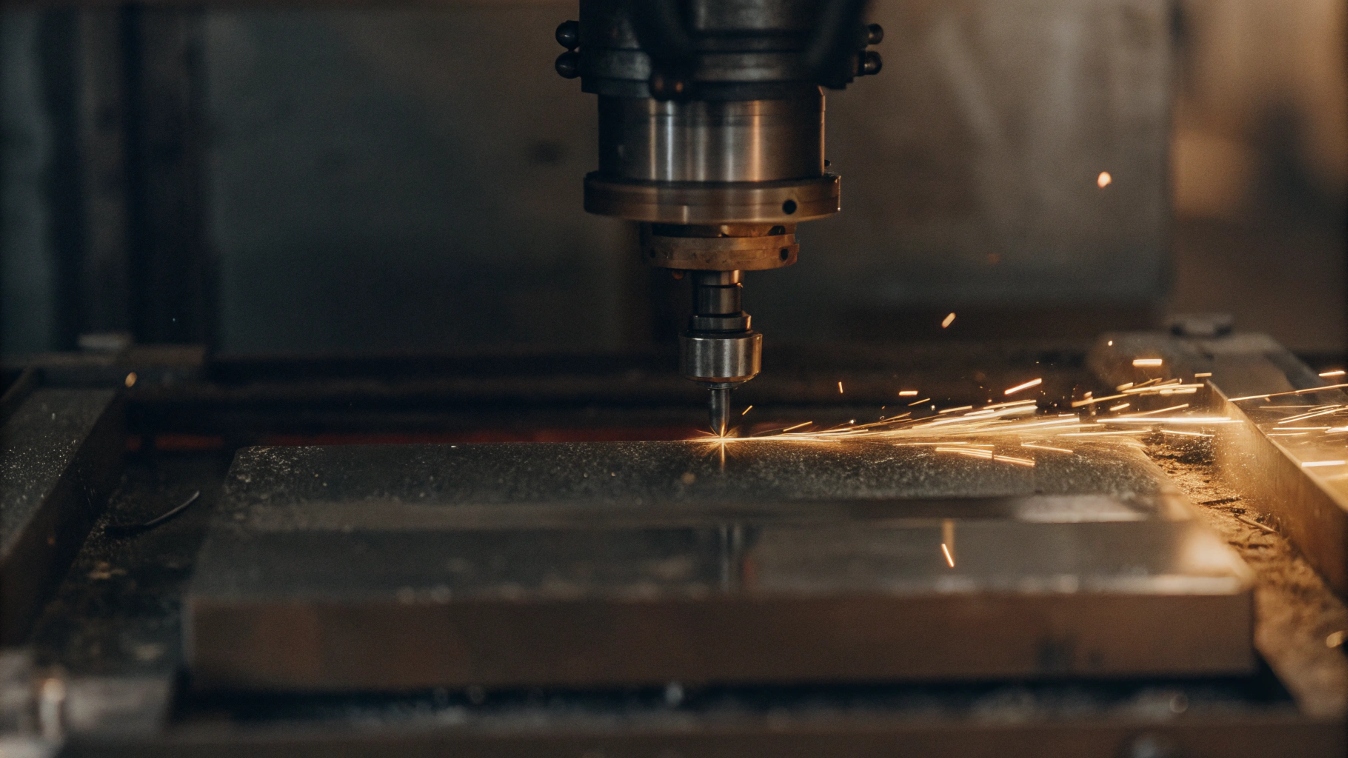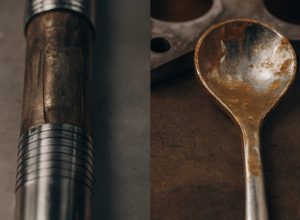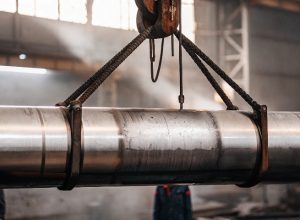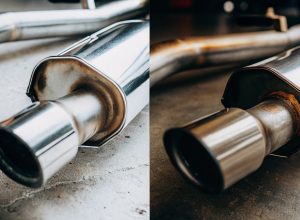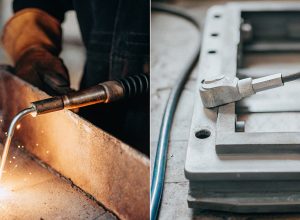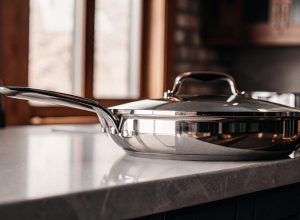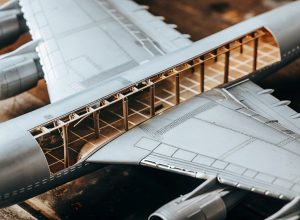Das richtige Material für die Luft- und Raumfahrt zu finden, ist schwierig. Eine falsche Wahl beeinträchtigt die Sicherheit und das Budget. Das Wissen um die Rolle von Aluminium und Titan gibt Ihnen die Sicherheit, die beste Option zu wählen.
Flugzeuge werden aus bestimmten Gründen sowohl aus Aluminium als auch aus Titan gebaut. Aluminium macht den Großteil der Flugzeugzelle aus, weil es leicht und einfach zu formen ist. Titan wird wegen seiner überlegenen Festigkeit und Hitzebeständigkeit in Bereichen mit hoher Belastung und hohen Temperaturen wie Triebwerken und Fahrwerken verwendet.
Ich erinnere mich an ein Gespräch mit Sophie, einer technischen Handelsvertreterin aus Kanada. Sie erklärt ihren Kunden aus der Luft- und Raumfahrtindustrie oft die Wahl des Materials. Sie erzählte mir, dass die häufigste Frage, die sie gestellt bekommt, die nach der spezifischen Rolle von Titan ist. Das ist eine gute Frage, denn Titan wird nicht überall verwendet. Aber dort, wo es verwendet wird, ist es absolut unverzichtbar. Lassen Sie uns herausfinden, warum das so ist. Lassen Sie uns also die einzelnen Metalle im Detail betrachten, beginnend mit dem Hochleistungsmetall Titan.
Warum wird Titan in Flugzeugen verwendet?
Triebwerke und Rahmen von Flugzeugen sind extremen Belastungen und Hitze ausgesetzt. Ein Materialversagen ist keine Option. Titan bietet ein unübertroffenes Verhältnis von Festigkeit zu Gewicht und Hitzebeständigkeit und gewährleistet so die Integrität des Flugzeugs und die Sicherheit der Passagiere.
Titan wird in Flugzeugen wegen seines unglaublichen Verhältnisses von Festigkeit zu Gewicht und seiner Fähigkeit, extremen Temperaturen standzuhalten, verwendet. Es ist unverzichtbar für Triebwerkskomponenten, Fahrwerke und andere stark beanspruchte Teile, für die Stahl zu schwer und Aluminium zu schwach wäre. Es gewährleistet Zuverlässigkeit unter rauen Bedingungen.
In meinem Unternehmen liefern wir häufig Ti-6Al-4V, eine spezielle Titanlegierung, an unsere Kunden in der Luft- und Raumfahrt. Diese Sorte ist nicht umsonst das Arbeitspferd der Branche. Ich erkläre den Einkaufsleitern, dass der wahre Wert dieser Legierung nicht nur in der reinen Festigkeit liegt, sondern in der Festigkeit, die nicht nachlässt, wenn es heiß wird. Wenn ein Flugzeugtriebwerk in Betrieb ist, können die Temperaturen in die Höhe schießen. Aluminium würde erweichen, aber Titan behält seine Form.
Wichtige Leistungsbereiche
Denken Sie an die Teile, die am stärksten beansprucht werden: die Lüfterblätter des Motors, das Fahrwerk und die Befestigungselemente, die die Flügelstruktur zusammenhalten. Diese Teile müssen stark, aber auch so leicht wie möglich sein. Titan ist etwa 40% leichter als Stahl, aber in vielen Fällen genauso stabil. Diese Gewichtseinsparung wirkt sich direkt auf die Treibstoffeffizienz aus.
Allgemeine Titananwendungen in der Luft- und Raumfahrt
| Komponente | Grund für die Verwendung von Titan |
|---|---|
| Motorlüfterblätter | Hochtemperaturfestigkeit, Ermüdungsfestigkeit |
| Fahrwerksbalken | Hohe Festigkeit im Verhältnis zum Gewicht, Korrosionsbeständigkeit |
| Flugwerksbefestigungen | Verhindert galvanische Korrosion mit Kohlenstoffverbundwerkstoffen |
| Abluftkanäle | Ausgezeichnete Hitze- und Korrosionsbeständigkeit |
Wenn ein Kunde also nach Titan fragt, dann will er in Wirklichkeit eine Leistungsgarantie für die anspruchsvollsten Teile des Flugzeugs.
Warum wird Aluminium in Flugzeugen verwendet?
Ein Flugzeug muss stark, aber auch leicht genug sein, um zu fliegen. Überall Schwermetalle zu verwenden, würde es zu teuer und ineffizient machen. Aluminium bietet die perfekte Lösung für dieses Problem.
Aluminium ist das wichtigste Material für Flugzeuge, denn es ist leicht, relativ stabil und lässt sich leicht zu den großen, gebogenen Paneelen verarbeiten, die für den Rumpf und die Tragflächen benötigt werden. Aufgrund seiner geringen Dichte kann das Flugzeug mehr Nutzlast oder Treibstoff transportieren, was die Flüge wirtschaftlicher und effizienter macht.
Wenn ich mit Kunden wie Sophie spreche, erörtern wir oft das Gesamtbild der Flugzeugzelle. Die Haut, die Rippen, die Stringer - diese Teile machen den größten Teil des Flugzeugkörpers aus. Sie sind nicht der gleichen extremen Hitze ausgesetzt wie die Triebwerksteile, so dass es Verschwendung wäre, hier teures Titan zu verwenden. Hier kann Aluminium glänzen. Seine geringe Dichte ist sein größter Vorteil. Weniger Gewicht bedeutet, dass das Flugzeug weniger Schub benötigt, um abzuheben und in der Luft zu bleiben.
Formbarkeit und Kosten
Ein weiterer wichtiger Faktor ist die Formbarkeit. Es ist relativ einfach, Aluminiumbleche zu bearbeiten, zu biegen und zu vernieten, um die glatte, aerodynamische Form eines Flugzeugs zu erhalten. Das macht die Herstellung schneller und billiger. Auf Fachmessen treffe ich Einkäufer, die riesige Budgets verwalten. Für sie machen es die niedrigeren Kosten von Aluminium möglich, Flugzeuge in großem Maßstab zu bauen. Einige unserer innovativsten Kunden verwenden jetzt hybride Strukturen1. Sie kombinieren Aluminiumrahmen mit Titan in bestimmten Gelenken, um das Beste aus beiden Welten zu erhalten und eine erhebliche Gewichtseinsparung von bis zu 15% zu erreichen.
Sind die Flugzeuge aus Aluminium oder Titan?
Die Leute fragen oft, ob Flugzeuge aus Aluminium oder Titan hergestellt werden. Diese Frage suggeriert, dass es das eine oder das andere ist. Aber diese Denkweise verkennt die intelligente Technik hinter modernen Flugzeugen.
Moderne Flugzeuge werden hauptsächlich aus Aluminiumlegierungen hergestellt. Dazu gehören der Hauptkörper (Rumpf) und die Tragflächen. Titan wird strategisch in viel geringerem Umfang für bestimmte Teile wie Triebwerkskomponenten, Fahrwerk und Bereiche, die eine hohe Festigkeit erfordern, verwendet, was nur einen geringen Prozentsatz des Gesamtgewichts ausmacht.
Am besten lässt sich diese Frage beantworten, indem man sagt, Flugzeuge bestehen aus beide. Stellen Sie sich das vor wie beim Bau eines Hauses. Sie verwenden Beton für das Fundament, weil er stabil ist, aber Sie verwenden Holz für die Wände, weil es leichter und einfacher zu bearbeiten ist. Das ist das gleiche Prinzip. Ich verweise oft auf Beispiele von großen Herstellern wie Boeing und Airbus. Ihre neueren Flugzeuge, wie die 787 oder der A350, verwenden tatsächlich eine Menge von Kohlefaserverbundwerkstoffe2aber die Philosophie ist die gleiche.
Eine Partnerschaft der Metalle
Sie verwenden einen Materialmix, um die gesamte Struktur zu optimieren. Aluminiumlegierungen bilden nach wie vor große Teile des inneren Gerüsts. Titanlegierungen werden dort verwendet, wo Metallteile mit diesen neuen Verbundstrukturen verbunden sind, da Titan keine galvanische Korrosion wie Aluminium verursacht. Es wird auch für kritische tragende Teile verwendet, z. B. für den Pylon, der das Triebwerk am Flügel hält. Es handelt sich also nicht um einen Wettbewerb zwischen den beiden Metallen, sondern um eine Partnerschaft. Jedes der beiden Metalle ist ein Werkzeug, das für eine bestimmte Aufgabe eingesetzt wird, um Festigkeit und Korrosionsbeständigkeit zu gewährleisten.
Was sind die Nachteile von Titan in Flugzeugen?
Angesichts der erstaunlichen Eigenschaften von Titan könnte man sich fragen, warum nicht das ganze Flugzeug aus Titan besteht. Diese Überlegung übersieht eine große Einschränkung in der Praxis. Die Realität ist, dass Titan erhebliche Nachteile hat.
Der größte Nachteil von Titan sind seine sehr hohen Kosten, sowohl für das Rohmaterial als auch für die Herstellung. Es ist schwierig zu gewinnen und zu verarbeiten. Es ist auch viel schwieriger zu bearbeiten als Aluminium, was spezielle Werkzeuge und mehr Zeit erfordert, was den Endpreis erheblich in die Höhe treibt.
Die Kosten sind der wichtigste Grund. Wenn ich Angebote für Kunden erstelle, ist der Preisunterschied eklatant. Rohtitan kann mehr als fünfmal so teuer sein wie Aluminium in Luft- und Raumfahrtqualität. Aber damit sind die Kosten noch nicht erschöpft. Der gesamte Herstellungsprozess ist schwieriger und teurer.
Herausforderungen bei der Herstellung
Titan hat einen sehr hohen Schmelzpunkt und ist reaktiv, weshalb es in einem Vakuumofen geschmolzen werden muss. Bei der maschinellen Bearbeitung - Schneiden, Bohren und Formen des Metalls - ist es sehr zäh. Die Schneidwerkzeuge verschleißen schnell und die Maschinen müssen langsamer laufen. Das alles bedeutet mehr Zeit und Geld. Ich rate meinen Kunden, so wie Sophie, immer, strategisch vorzugehen. Wir prüfen die Pläne sorgfältig und legen genau fest, wo die Leistung von Titan nicht verhandelbar ist. In allen anderen Bereichen ist Aluminium oder ein anderes Material oft die finanziell klügere Wahl. Es ist eine Gratwanderung zwischen ultimativer Leistung und Budget-Realität.
Schlussfolgerung
Kurz gesagt: Flugzeuge bestehen aus einer intelligenten Mischung von Materialien. Aluminium bietet einen leichten Rahmen, und Titan sorgt dort, wo es benötigt wird, für die nötige Festigkeit, wodurch sichere, effiziente und kostengünstige Flugzeugkonstruktionen entstehen.

